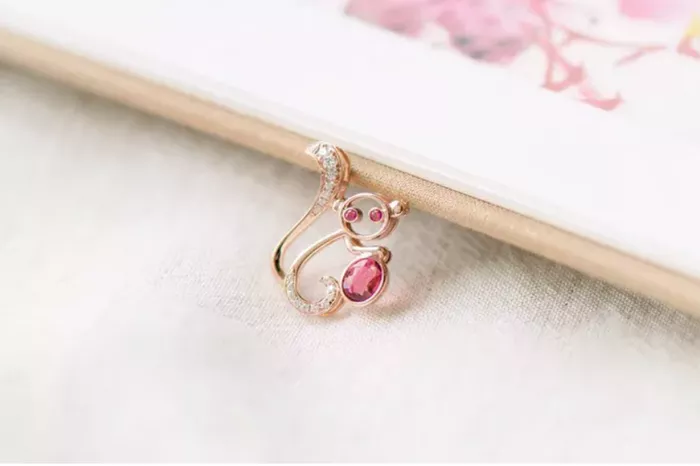Pink tourmaline is one of the most vibrant and beloved gemstones, known for its delicate yet striking hues. As a variety of tourmaline, it holds a special place in the jewelry world due to its rarity and beauty. Pink tourmaline, like its other tourmaline cousins, boasts incredible tourmaline properties that make it desirable for both its aesthetic value and believed spiritual benefits. In this article, we will explore where pink tourmaline is most commonly found, the geological conditions conducive to its formation, and its significance in both the jewelry industry and gemstone market.
What is Pink Tourmaline?
Pink tourmaline is a beautiful gemstone that comes in a range of colors, but its pink variety is the most sought after. Tourmaline is a group of silicate minerals that come in many colors, with pink being a popular choice for fine jewelry. The gemstone’s color can range from pale pastel pink to vibrant rose or hot pink. The specific color is influenced by the mineral’s chemical composition, which can include iron, magnesium, and lithium, with lithium playing a particularly significant role in producing pink hues.
Geological Origins of Pink Tourmaline
Pink tourmaline, like all tourmaline varieties, forms in specific geological conditions. Tourmaline crystals typically form in igneous rocks such as granite and pegmatite. These rocks contain high levels of minerals that are ideal for the formation of tourmaline crystals. Pink tourmaline is often found in pegmatites, which are coarse-grained, intrusive rocks rich in quartz, feldspar, and mica. The conditions within these rocks allow for the crystallization of large, gem-quality tourmaline crystals.
Where is Pink Tourmaline Most Commonly Found?
Pink tourmaline can be found in several parts of the world, but certain locations are known for producing the highest quality specimens. The primary sources of pink tourmaline include regions in Brazil, Africa, and the United States.
Brazil
Brazil is perhaps the most famous source of pink tourmaline, particularly from the state of Minas Gerais. This region has long been known for producing high-quality gemstones, including vibrant pink tourmaline. The pegmatite deposits in Minas Gerais are rich in the minerals required for the formation of pink tourmaline, making it one of the leading producers of this gemstone in the world.
Afghanistan
Another well-known source of pink tourmaline is Afghanistan. The country has been a significant producer of tourmaline for centuries, and its mines in the Panjsher Valley are particularly noted for their rich deposits of pink, red, and green tourmaline varieties. Afghan pink tourmaline is highly prized for its deep, rich color and crystal clarity.
United States
In the United States, pink tourmaline is commonly found in California and Maine. California’s San Diego County has been a notable producer of fine-quality pink tourmaline, while Maine has also been a source of beautiful specimens. The Tourmaline Mines in Maine are renowned for their wide variety of colors, including pink. Although less abundant than Brazilian or Afghan tourmaline, the American pink tourmaline is still considered valuable in the gemstone market.
Tourmaline Mining and Extraction
The mining of pink tourmaline is an intricate process that requires both knowledge of the geology of the area and specialized techniques to extract the crystals. Since tourmaline can form in large veins within pegmatite rocks, miners often employ a combination of traditional and modern extraction methods. Once extracted, the rough stones are carefully cleaned and cut to reveal their color and brilliance.
Tourmaline Meaning and Significance
Beyond its beauty, tourmaline meaning has a special place in various cultures. It is believed to bring emotional healing and balance, and pink tourmaline, in particular, is associated with love, compassion, and heart healing. Many people wear pink tourmaline jewelry for its metaphysical properties, believing it can promote a sense of calm and emotional well-being.
Tourmaline is known for its unique physical properties, which include a wide range of colors, high durability, and relative scarcity in some varieties. As a gemstone, pink tourmaline is valued for its hardness (7 to 7.5 on the Mohs scale) and its ability to display vibrant, lasting colors. Tourmaline benefits are also celebrated in holistic practices, where it is said to help in balancing energies, promoting positivity, and fostering emotional healing.
Why Pink Tourmaline is Popular in Jewelry
Pink tourmaline’s popularity in the jewelry market is not just because of its attractive color but also due to its ability to be shaped into a variety of cuts and settings. Its beauty and symbolism make it a popular choice for engagement rings, necklaces, earrings, and bracelets. The gemstone’s versatility, combined with its perceived emotional benefits, make it an ideal choice for those seeking a meaningful yet stunning piece of jewelry.
Conclusion
Pink tourmaline is a gemstone treasured for its unique beauty, emotional significance, and geological rarity. Found primarily in Brazil, Afghanistan, and the United States, it continues to capture the hearts of jewelry enthusiasts and collectors worldwide. Whether you are drawn to its physical beauty or the tourmaline properties that are believed to enhance emotional well-being, pink tourmaline remains a gemstone of timeless appeal.
Related topic:
- Discover the Origins of Green Tourmaline
- What Does Green Tourmaline Symbolize?
- Authenticating Black Tourmaline: A Complete Guide


